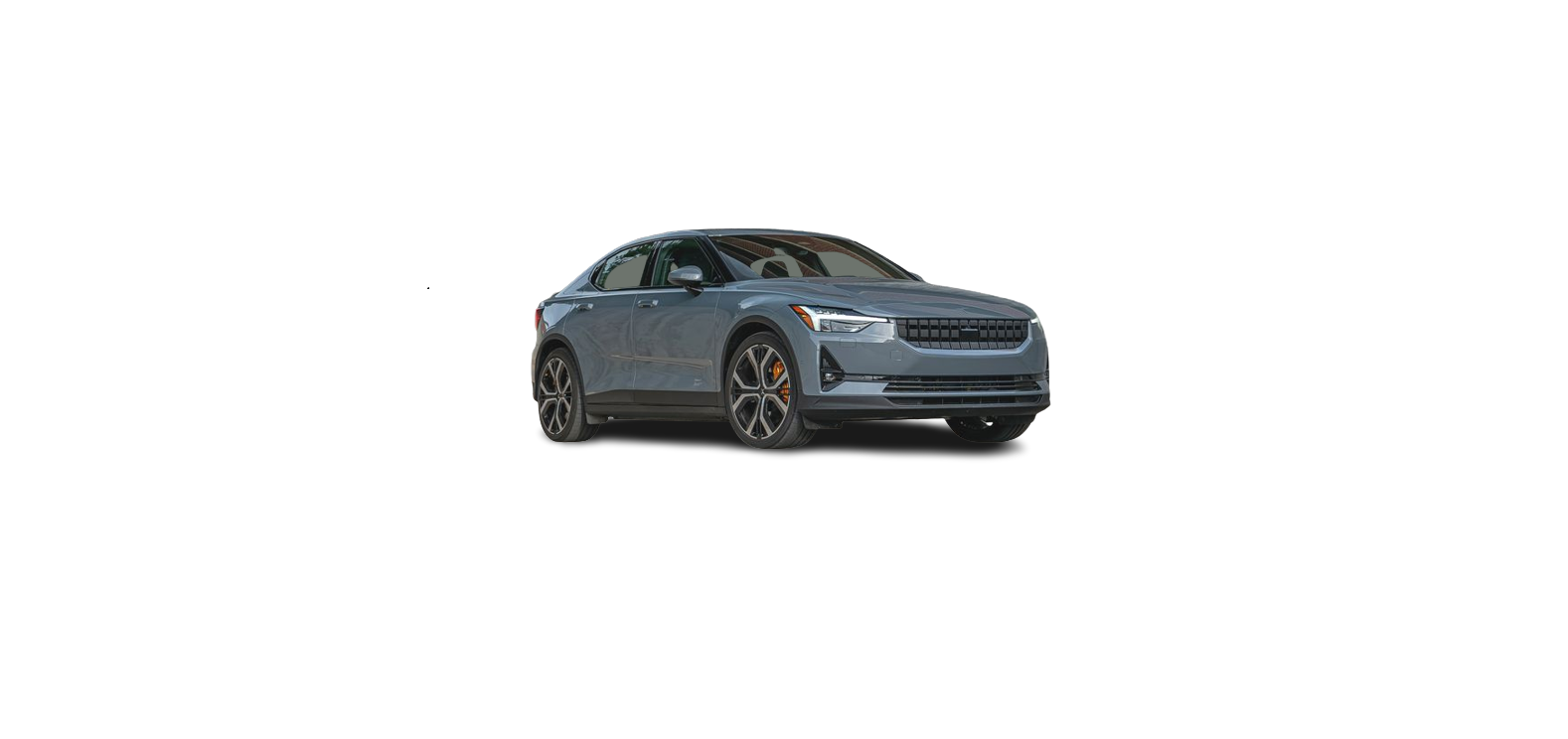 2021 Polestar 1 Exterior cleaning
2021 Polestar 1 Exterior cleaning
Automatic car washes
Polestar recommends not washing the vehicle in an automatic car wash during the first few months; the paintwork on new vehicles takes some time to fully harden.
Information on how to help prevent damage to vehicles with matte paint is provided in a separate section. Before driving the vehicle into a car wash, deactivate the Automatic Braking when the Stationary and Automatic Parking Brake Application functions. If the functions are not deactivated, the brake system will seize when the vehicle is stationary and the vehicle will not be able to roll. For automatic car washes in which the vehicle is pulled forward on rolling wheels:
- Before washing the vehicle, make sure that the automatic rain sensor is deactivated. If it is not deactivated and inadvertently starts, the wiper arms could be damaged.
- To help prevent damage from the automatic car wash machinery, make sure that the door mirrors are folded in, antennas retracted or removed, and any auxiliary lights secured.
- Turn off the “Automatic Braking when Stationary” function using the button in the tunnel console.
- Turn off the “Automatic Parking Brake Application” function in the center display’s Top view.
- Drive into the automatic car wash.
- Put the gear selector in position N.
- Turn off the engine by turning the start knob in the tunnel console clockwise. Hold the knob in position for at least 2 seconds.
The vehicle is now ready for the automatic car wash.
The system will automatically change to P mode if the above steps are not followed. In P mode, the wheels are locked, which they should not be when the vehicle is being washed in a car wash.
Note that the keyless locking and unlocking function could cause the vehicle to lock/unlock when it is being washed if the key is within range.
Testing the brakes
Always test the brakes, including the parking brake, after washing the vehicle to ensure that moisture and corrosion do not attach to the brake pads and impair brake functionality. Lightly depress the brake pedal from time to time when driving long distances in rain or slush. The heat from the friction will help warm up and dry the brake pads. Do the same after starting the vehicle in very damp or cold weather.
Care and treatment of matte paintwork
Important instructions for hand washing a vehicle with matte paint
- Hose down the entire vehicle and remove any loose dirt, droppings, etc. to reduce the risk of scratches from washing. Do not spray directly onto locks. Be particularly careful when using a high-pressure wash. Hose down the underbody, including the wheel housings and bumpers.
- Wash the vehicle with a microfiber wash mitt, a vehicle shampoo, and plenty of lukewarm water.
- Remove bird droppings from paintwork as soon as possible. It contains chemicals that affect and discolor paintwork very quickly.
- Wet the area.
- Rinse off.
- Wash with vehicle shampoo for matte paint and use a wash mitt.
Contact Polestar Customer Support for information on removing discoloration.
- Insects, grease stains, and fingerprints are most effectively removed using a detergent specially designed for matte paint. Apply the detergent using a microfiber cloth and gentle pressure.
- Dry the vehicle with a clean, soft microfiber cloth. Water stains may appear on the paintwork if water droplets are left to dry in strong sunlight.
- Remember to remove dirt and debris from the drain holes in the doors and sills after washing the vehicle.
- Paint repairs should only be performed by an authorized workshop. Contact Polestar Customer Support for workshop recommendations.
- In areas with heavy industrial emissions, more frequent washing of the vehicle’s exterior is recommended.
Ensure that doors, windows and hatches are closed during high-pressure washing. Never polish matte paintwork. Polishing causes the paint to become glossy. Do not use paint cleaners, abrasives, polishing products, or gloss protection, e.g. wax for high-gloss paint. These products are only designed for high-gloss surfaces. Using these products on matte paint will lead to shiny spots on the paintwork.
- Avoid getting resin, sap, grease, or oil on the vehicle’s paintwork. These can leave residues. Remove immediately with a cleaning agent designed for matte paint.
- Asphalt stains on the paint surface can be removed with a vegetable-based asphalt remover. Contact Polestar Customer Support for product recommendations.
Wipe carefully and do not press too hard on the paint surface. Do not wash the vehicle in direct sunlight. This could cause the cleaning agent to dry too quickly and form a patchy surface layer on a vehicle with matte paintwork. Do not rub the paintwork when washing and drying the vehicle. This could destroy the matte effect and make the paint permanently glossy. Do not affix decals to painted surfaces. Glue reside could damage the paintwork.
Cleaning exterior plastic, rubber, and trim components
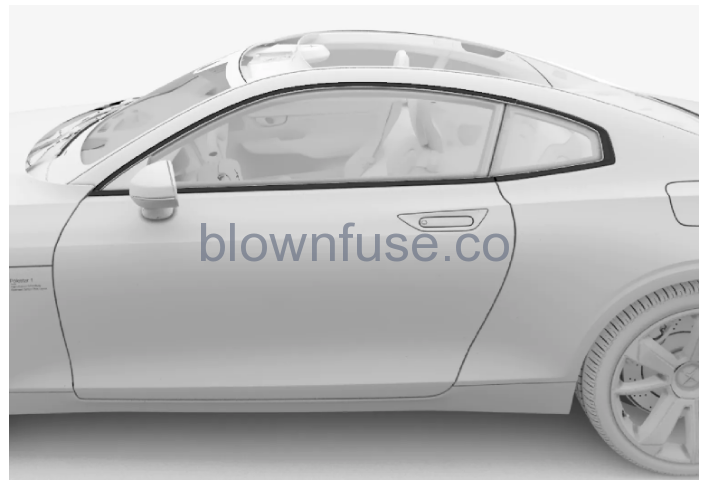
Avoid washing the vehicle with a cleaner with a pH value below 3.5 or above 11.5. This could cause discoloration of anodized aluminum components such as around the side windows. Never use metal polishing agents on anodized aluminum components. This could cause discoloration and destroy the surface treatment. Components should be washed with a cleaning product with a pH value between 3.5 and 11.5.
- Avoid waxing and polishing plastic and rubber.
- If using degreaser on plastic and rubber, only rub (if necessary) with slight pressure. Use a soft sponge.
- Polishing glossy trim moldings can wear away or damage the glossy surface layer.
- Polish containing abrasives must not be used.
Cleaning rims
Cleaning the exterior
Cleaning wiper blades
Wash the wiper blades and windshield regularly with a lukewarm soap solution or vehicle shampoo. Do not use strong solvents.
Color codes
Color code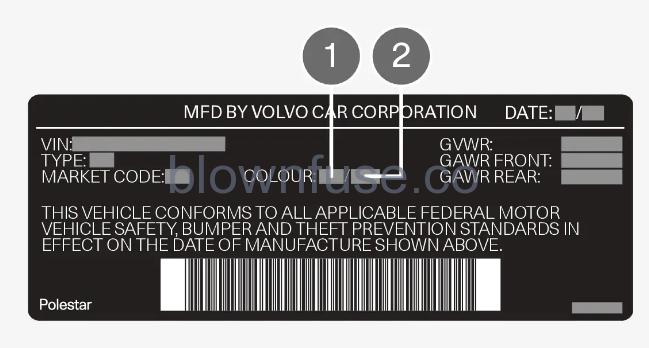
Sample color code: US models.
- Exterior color code
- Secondary exterior color code (if applicable)
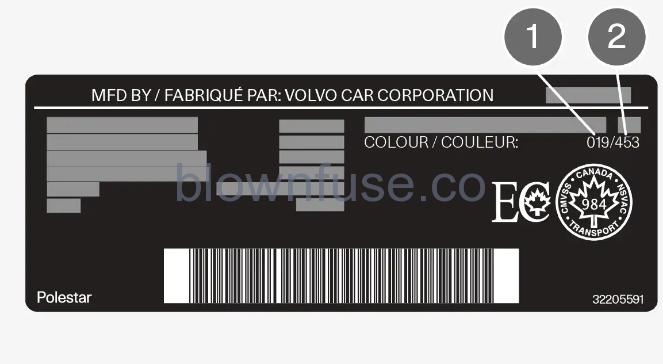
Sample color code: Canadian models.
- Exterior color code
- Secondary exterior color code (if applicable)
It is important to use the right color.
Corrosion protection
Inspection and maintenance
The vehicle’s corrosion protection does not normally require maintenance. The use of strong alkaline or acidic cleaning fluids should be avoided on shiny body components.
Hand washing
Keep the following points in mind when hand-washing the vehicle
Information on how to help prevent damage to vehicles with matte paint is provided in a separate section.
- Avoid washing the vehicle in direct sunlight. This could cause the detergent or wax to dry out and become abrasive.
- Remove bird droppings from paintwork as soon as possible. It contains chemicals that affect and discolor paintwork very quickly. Use e.g. soft paper or a sponge soaked in lots of water. Contact Polestar Customer Support for information on removing discoloration.
- Hose down the underbody, including the wheel housings and bumper.
- Hose down the entire vehicle and remove any loose dirt, droppings, etc. to reduce the risk of scratches from washing. Do not spray directly onto locks.
- If necessary, use a cold degreaser on heavily soiled surfaces. Note that in such cases the surfaces must not be hot from the sun.
- Wash using a sponge, car washing detergent, and plenty of lukewarm water. Ensure that the sponge is free of dirt. Dirt on the sponge may mean that you scratch the vehicle during washing.
- Clean the wiper blades with lukewarm soap solution or car washing detergent.
- Dry the vehicle using a clean, soft chamois or a squeegee. Try not to let drops of water dry in strong sunlight. This could cause water-drying stains that may need to be polished out.
- In areas with heavy industrial emissions, more frequent washing of the vehicle’s exterior is recommended.
- Tar spots from asphalt may remain even after washing. Use a tar remover to remove these spots after washing the vehicle.
Always entrust engine washing to a workshop. If the engine is hot, there is a risk of fire.
Dirty headlights do not work as well. Clean them regularly, e.g. when refueling. Do not use corrosive cleaners. Use water and a non-abrasive sponge.
Exterior lighting such as headlights and taillights may develop temporary condensation on the inside of the lens. This is normal. All exterior lighting is designed to resist this. Condensation is normally vented out of the lamp housing once the light has been lit for some period of time.
- Never use abrasive polishing agents on the panoramic roof.
- Never use wax on the rubber seals around the panoramic roof.
High-pressure washing
Be particularly careful when using a high-pressure wash on vehicles with matte paint. To preserve the matte paint, a high-pressure wash should only be used with caution to remove loose particles before hand-washing the vehicle. If washing the vehicle with a high-pressure wash, use sweeping movements and keep the nozzle at least 30 cm (13 in.) from the vehicle. Do not spray directly on the lock or on the inside of the
Paintwork
Polishing and waxing
Never polish or wax a vehicle with matte paint. This could destroy the paint’s matte effect and make the paint permanently glossy where it has been polished or waxed.
- Wash and dry the vehicle very carefully before polishing or waxing. Remove asphalt and tar stains with asphalt remover or paint thinner. More stubborn stains can be removed with a grinding paste designed for vehicle paint.
- Use polish first and then liquid or paste wax. Follow the instructions on the package carefully. Many products contain both polish and wax.
- A wide range of polymer-based waxes can be purchased today. These waxes are easy to use and produce a long-lasting, high-gloss finish that protects the bodywork against oxidation, road dirt and fading.
Avoid waxing and polishing plastic and rubber. If using degreaser on plastic and rubber, only rub (if necessary) with slight pressure. Use a soft sponge. Polishing glossy trim moldings can wear away or damage the glossy surface layer. Polish containing abrasives must not be used. Only use paintwork treatments recommended by Polestar. Contact Polestar Customer Support for information. Other treatments, such as preservation, sealing, protection, luster sealing or similar, could damage the paintwork. Paintwork damage caused by such treatments are not covered by Polestar’s warranty.
Touching up minor paint damage
Paint damage on vehicles with matte paint should be repaired by a workshop. Contact Polestar Customer Support for information on workshops.
Make sure the surface is clean and dry before performing any touch-ups to the paint. The surface temperature should be at least 15 °C (59 °F).
Materials that might be needed
- Primer ‒ special adhesive primer is available in a spray can for e.g. plastic-covered bumpers.
- Base coat and clear coat ‒ available in spray cans or as a touch-up pen/stick.
- Masking tape.
- Fine-grain sandpaper.
Applying touch-up paint to a damaged surface
If the damage has not reached all the way down to the bare carbon fiber, then touch-up paint can be applied immediately after the surface has been cleaned.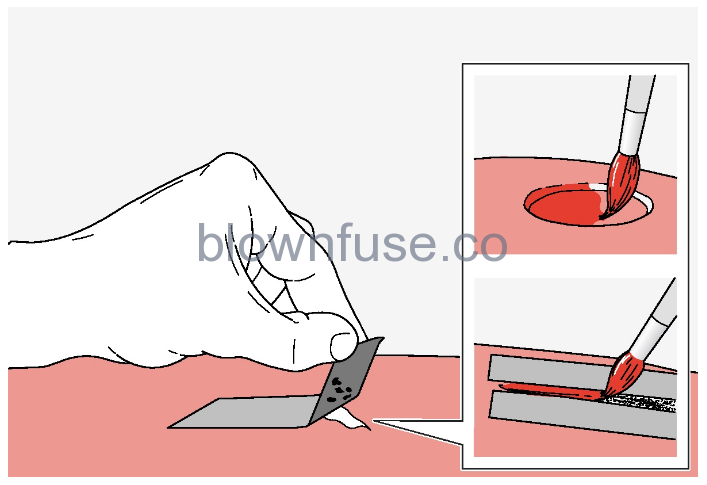
- Place a strip of masking tape over the damaged surface. Pull the tape off so that any loose flakes of paint adhere to it.
If the damage goes down to the bare carbon fiber, you may need to use primer first. If the paint damage is on a plastic surface, an adhesive primer should be used for better results. Spray the primer into the lid of the spray can and brush on thinly. - Light sanding with a very fine-grained sandpaper or similar may be required before painting (e.g. if there are uneven edges). Clean the surface thoroughly (grease and salt should be removed) and allow to dry.
- Thoroughly mix the primer and apply it with a small brush, toothpick or similar. When the primer is dry, apply one or more coats of paint and then a clear coat, letting the paint dry between each application.
If there is a longer scratch, follow the same procedure as above, but first mask off the surrounding area to protect the undamaged paint. Contact Polestar Customer Support for information about touch-up pens/sticks and spray paint for touching-up paint damage.
If the stone chip has not gone down to the carbon fiber surface and an undamaged coat of paint remains, apply base coat and clear coat immediately after cleaning the surface.
